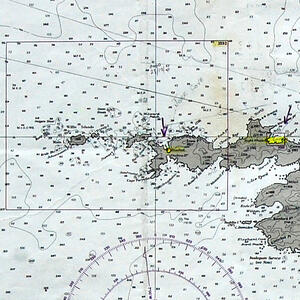
While at Elsehul, thinking we had been lucky with the weather while at South Georgia, we became trapped by a developing system that ended up throwing some serious winds at us. Along with Golden Fleece, we endured at anchor three days of constant storm force conditions – at times strengthening to hurricane force – much of it gusty and katabatic in nature, funneled and pumped by the terrain not just in the bay but also on the south side of the isthmus.
There were albatrosses to be found here, presumably grounded during the storm, nesting amongst the tussocks up on the hillsides. Then, it was a return to King Edward Cove before leaving for good.
Elsehul and return to the Falklands
Wind, rain and sleet, and salt water blasted off the surface of the sea make a difficult scenario for the photographer, particularly if said photographer is also skipper of the boat and deeply concerned about his responsibilities.
We saw about 80 knots of wind in Elsehul.
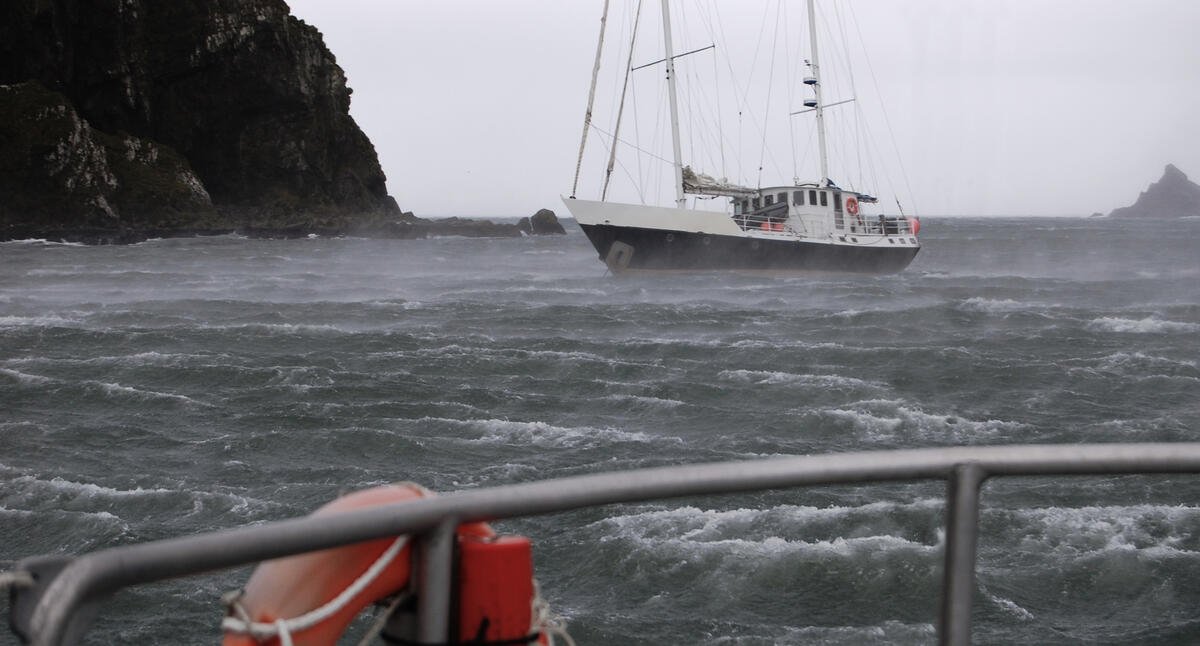
One of the crew recorded the following short video. It doesn’t show the 80 knots, but rather wind “bullets” racing around the bay hitting about 60 knots at most. Nonetheless we thought it a worthwhile inclusion. These gusts are worse than consistent winds even if stronger, resulting in much higher peak loads on the anchor.
Kiwi Roa was anchored to her usual Rocna 55 (121 lb), her 12 mm chain frequently bar taut, and never dragged. Readers may question the absence of a snubber – conditions were such that one would have been dangerous, and being able to get away quickly was more important. The higher shock loads placed on the anchor simply have to be accepted in these situations.
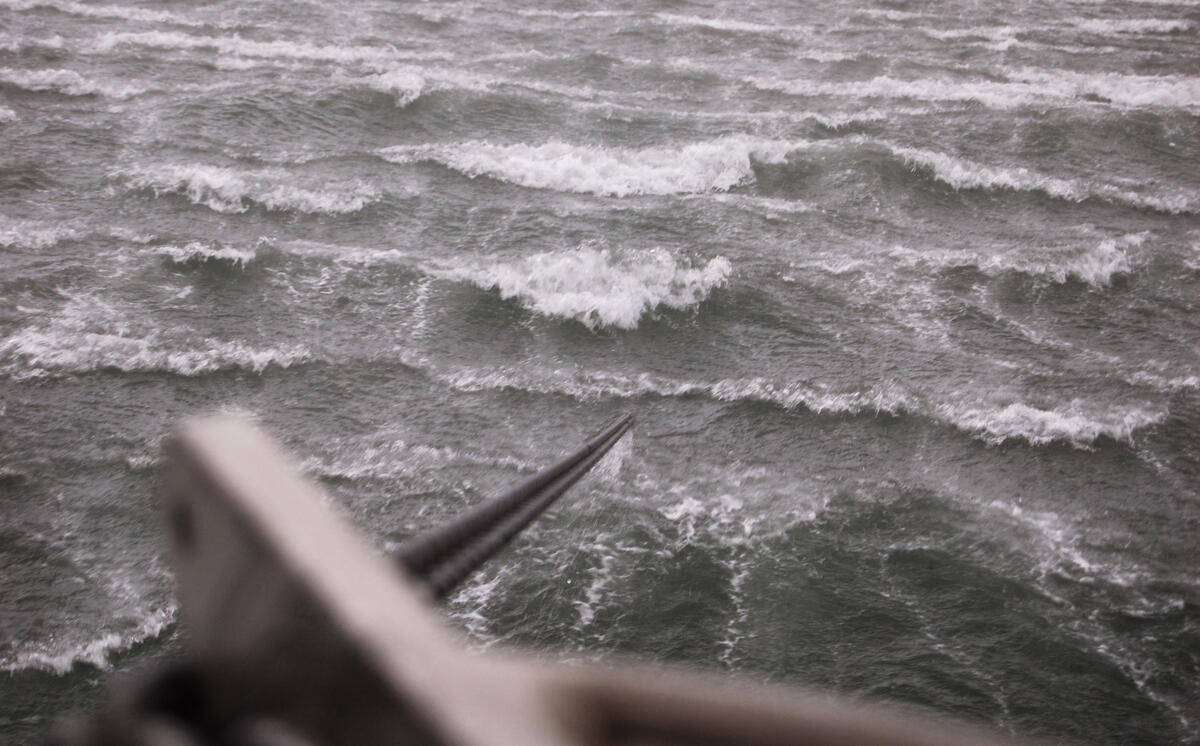
Golden Fleece on the other hand slowly dragged her plow and needed to re-set it several times. Jérôme has now installed a Rocna 110 (243 lb) and reports a vast improvement. There is a photo of him with his new anchor on the fifth page of the Falklands Photo Story.
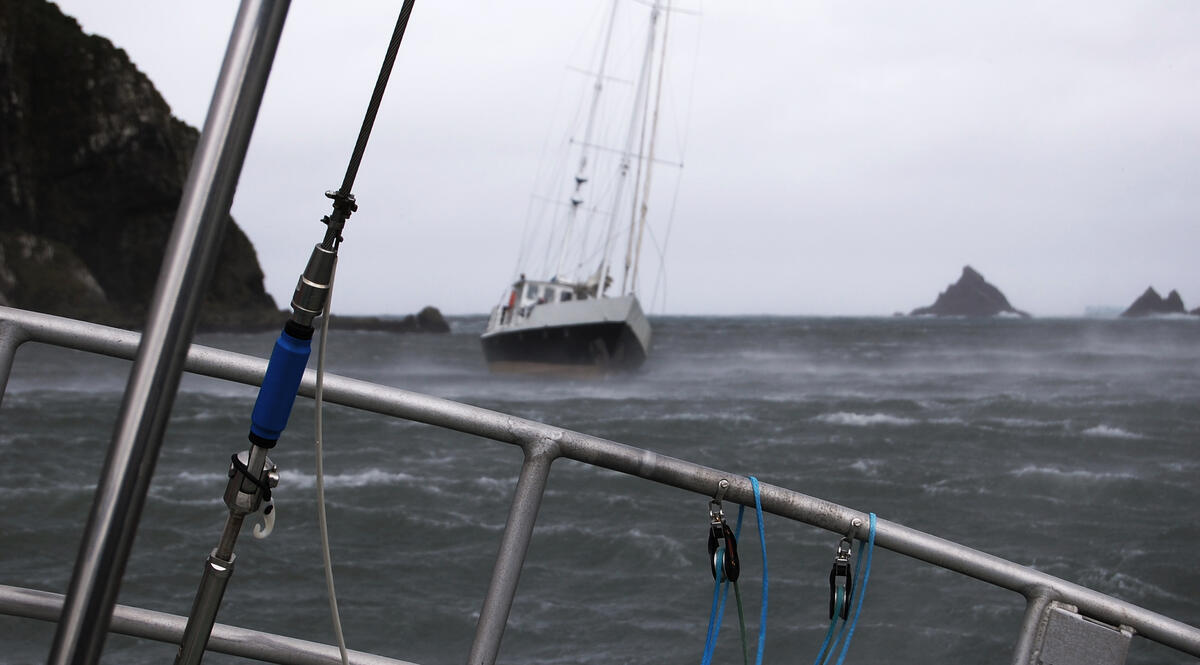
Atop the cliffs and the ridgelines of Elsehul, if not blown away by the recent tempest, were more albatrosses to be found.
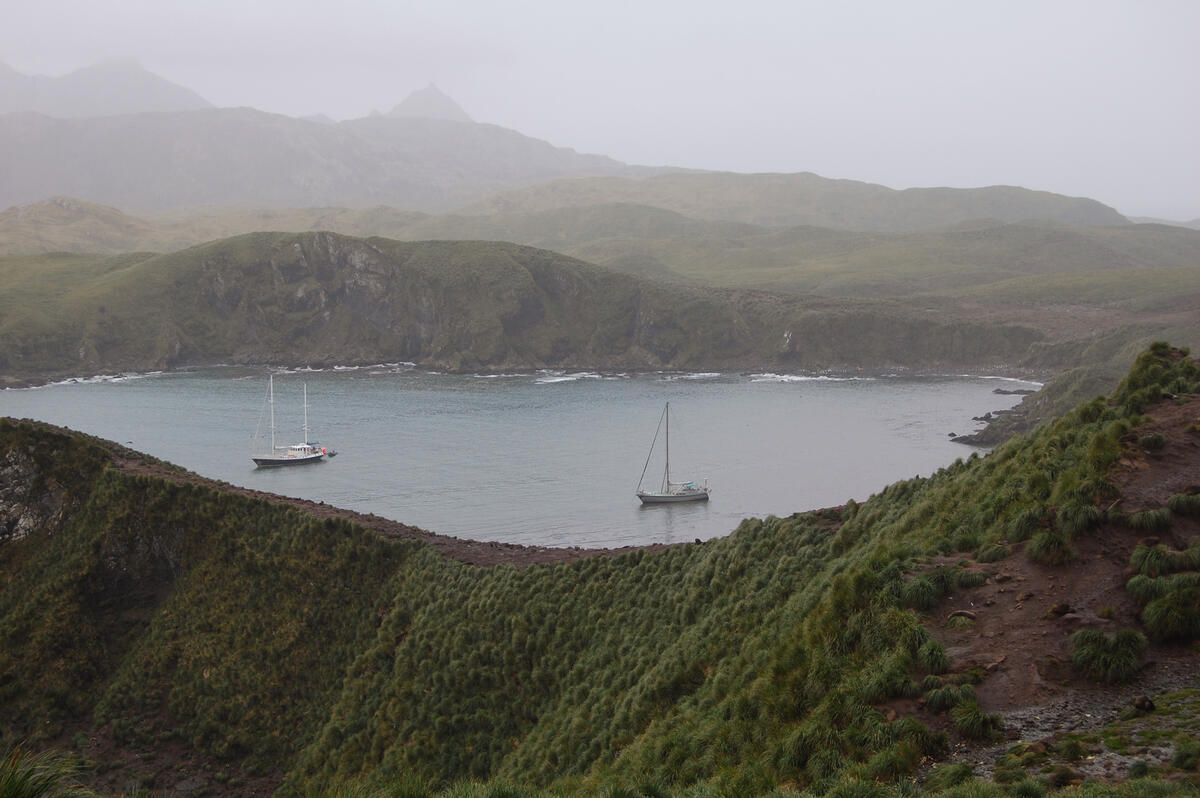
These are grey-headed albatrosses, which nest on the steep slopes amongst tussock in locations both protected from predators and accessible from the air.
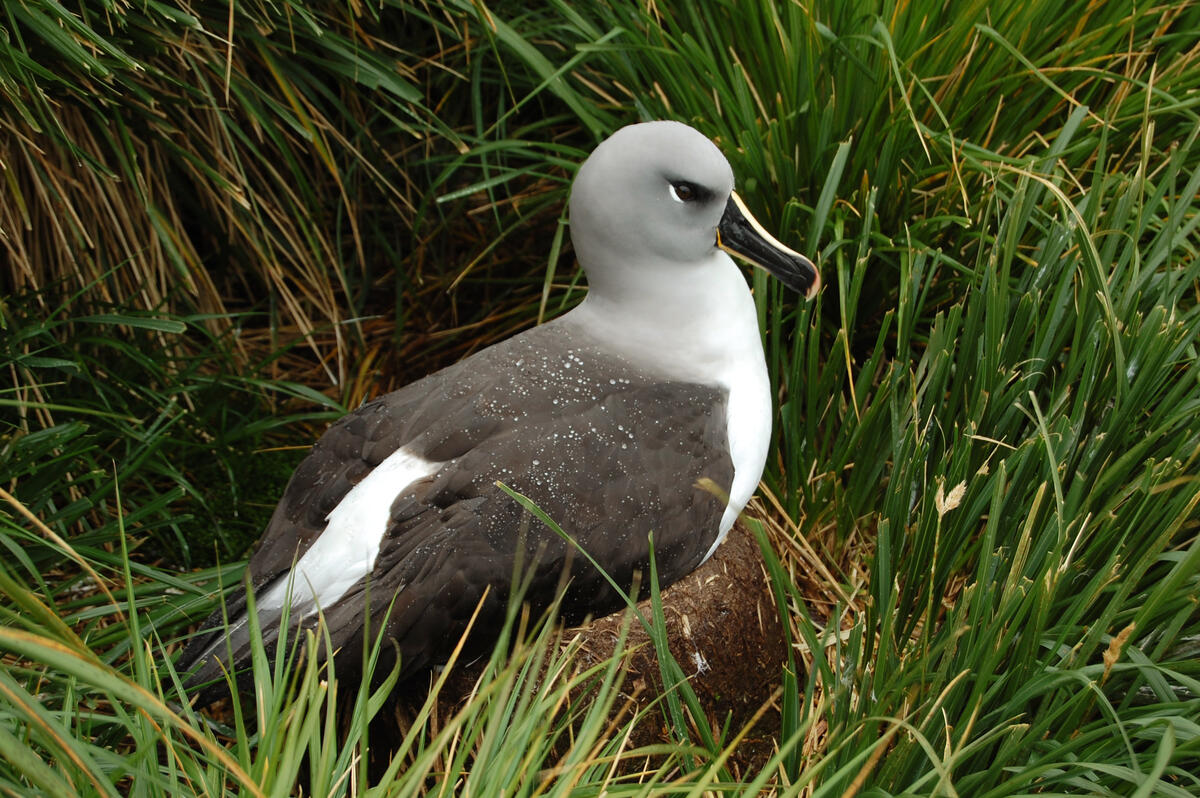
These chicks know nothing but their nests before fledging some five months after hatching. Like their great wandering cousins, these birds are ranked as vulnerable in terms of conservation status, endangered by human fishing in their feeding grounds deep at sea.
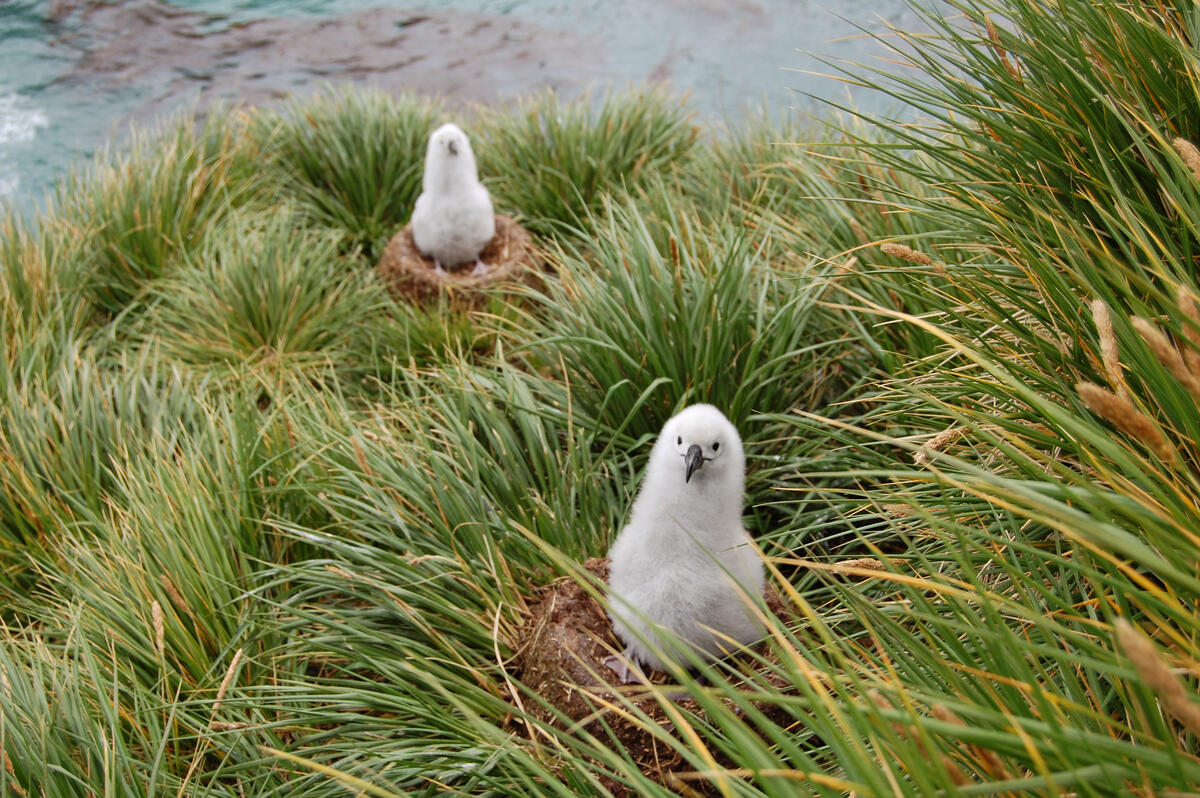
This parent was circling the nest site, lining up a landing run.
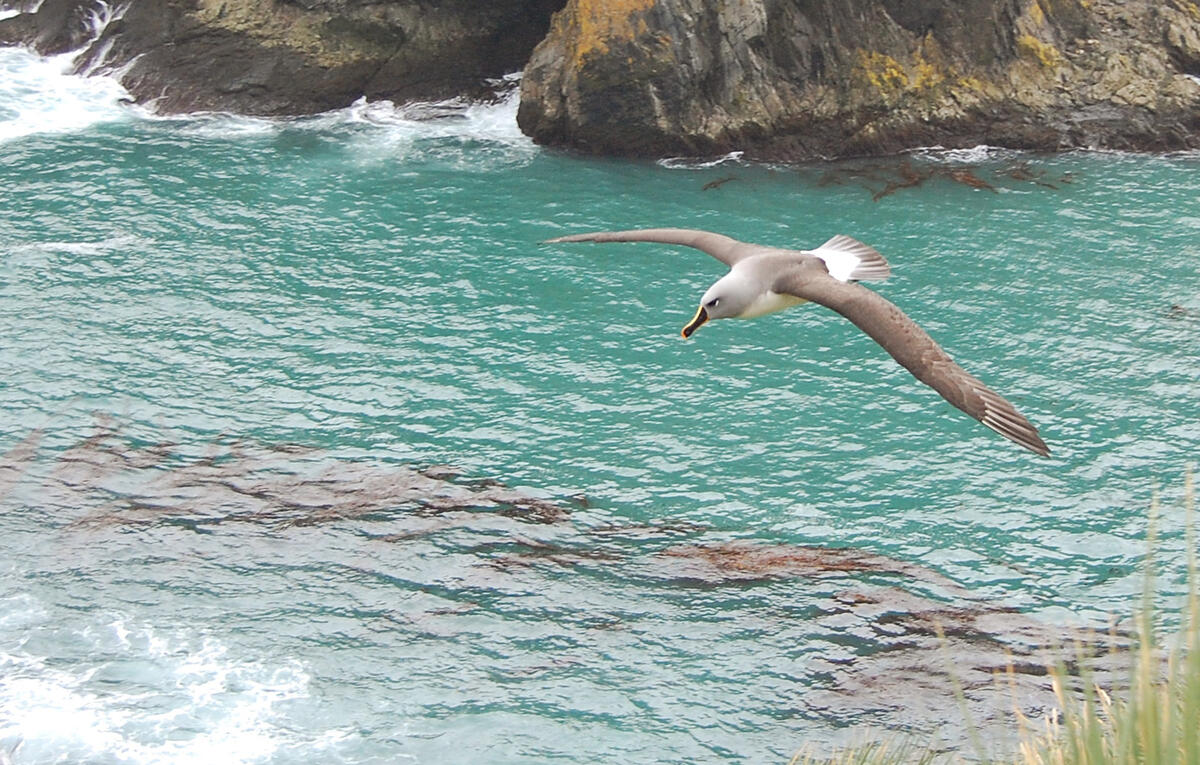
As if broken by the storm, it seemed that summer wanted to quit early this year. Back at the dock at Grytviken in King Edward Cove, the snow and ice crept in as if to test our understanding that we were still technically in Antarctica.
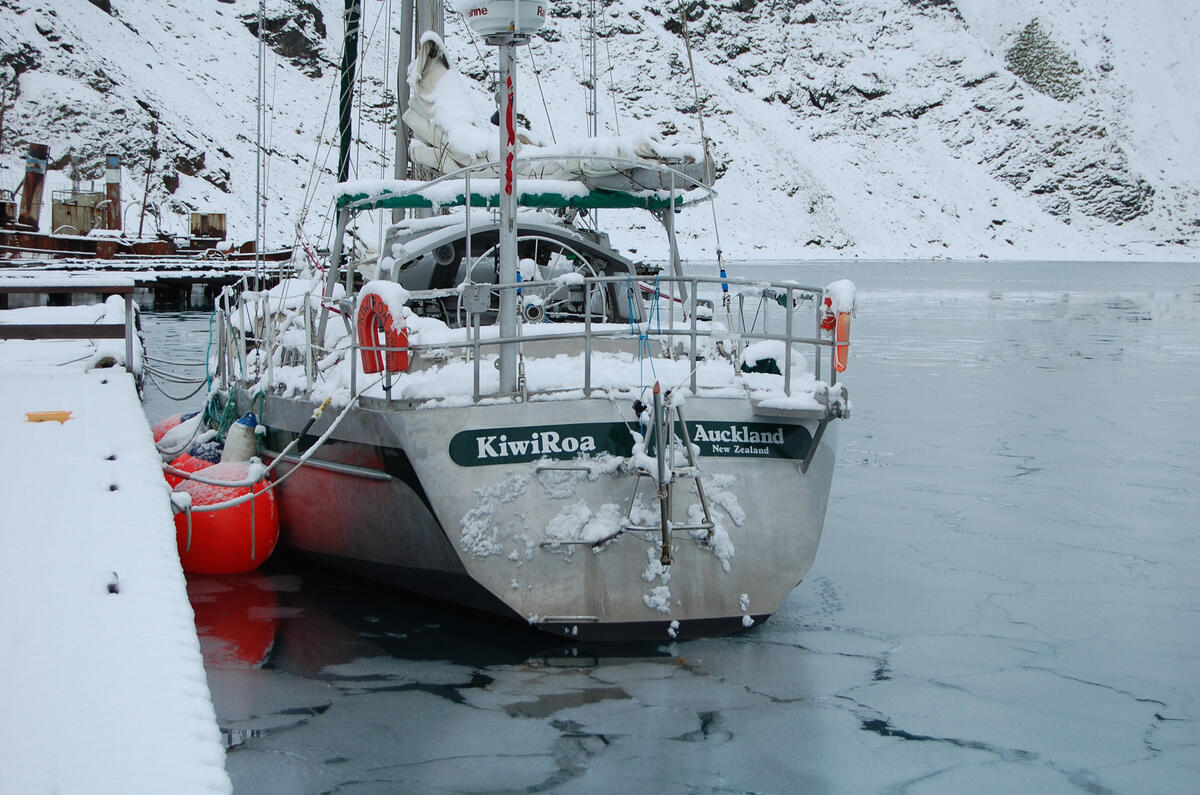
Snow at the old buildings at Grytviken brought more hints of the end of the season.
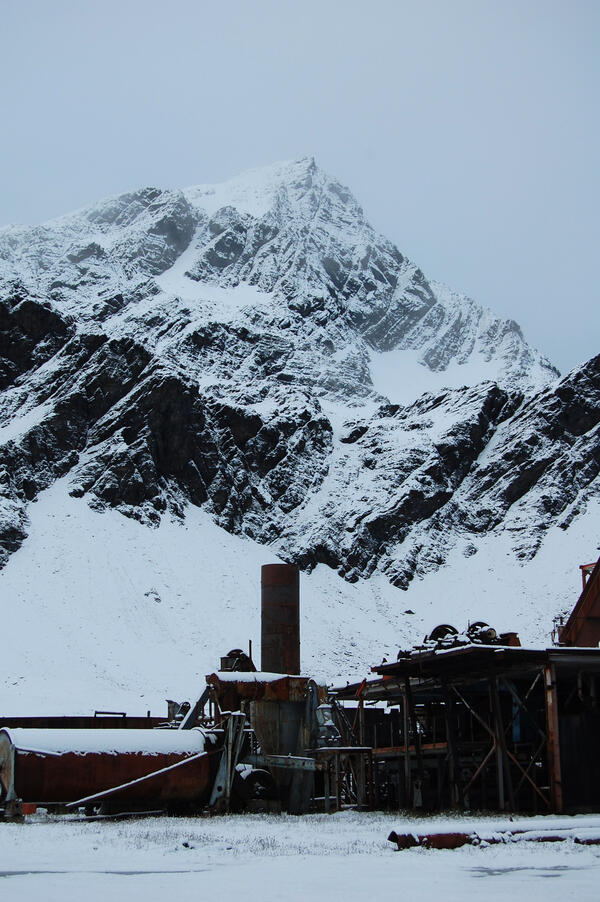
While the landscape altered dramatically, the sea too started to freeze.
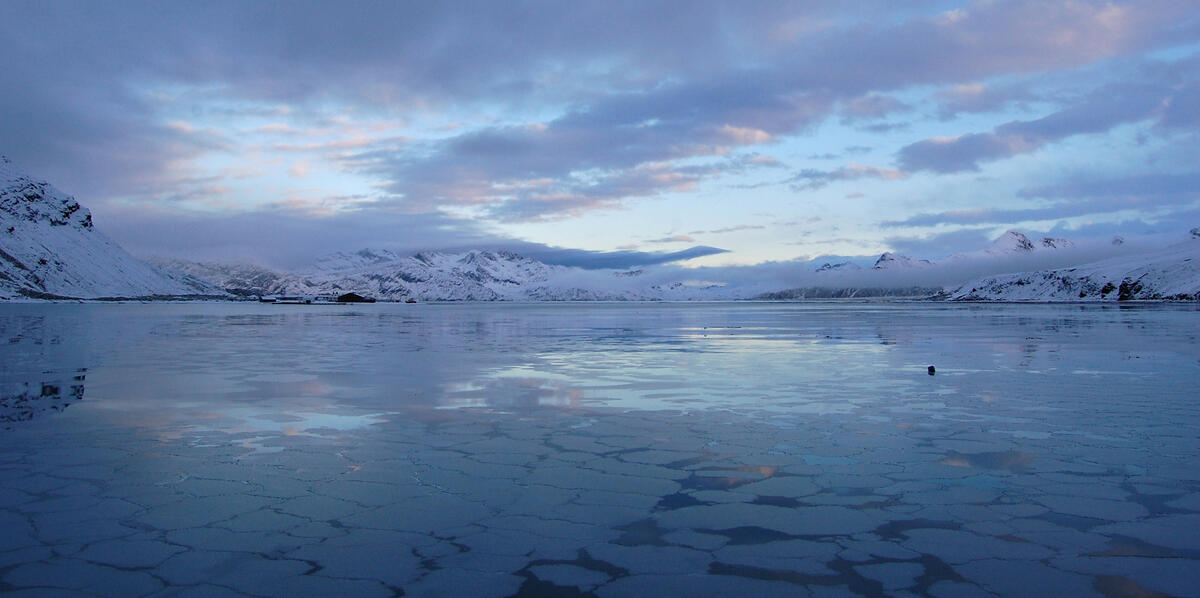
Again, katabatic winds blasting the bay. We were used to this sort of thing at this point.
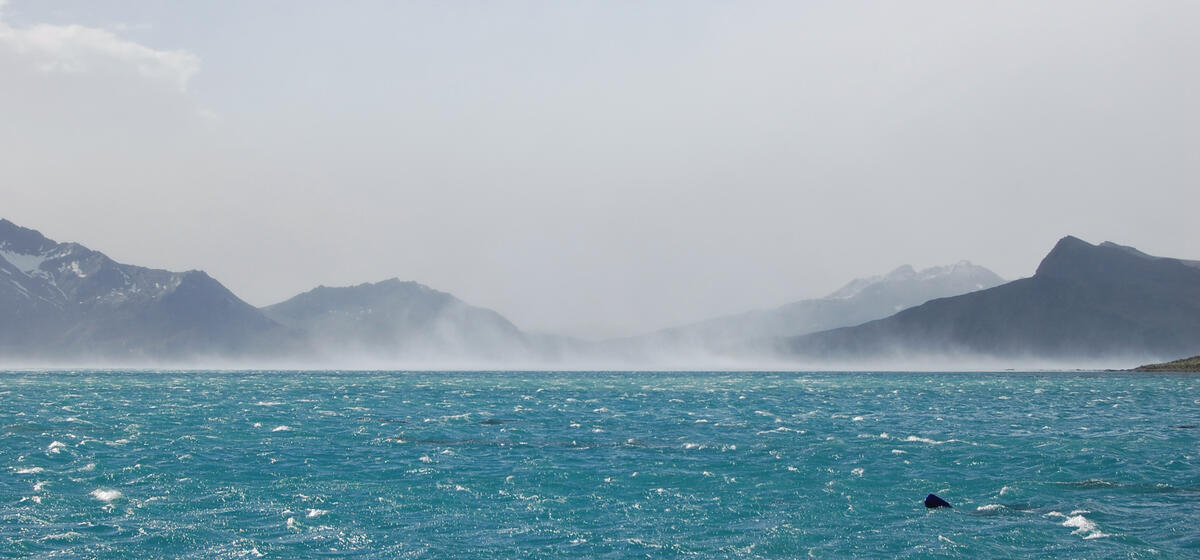
Planning the return passage to the Falkland Islands relied principally on finding a weather window and accepting that a lot of it was going to be uphill. This GRIB chart shows a typical system moving through every few days – a deep depression with widespread precipitation, and up to 50 knots of wind directly in our way. Kiwi Roa is the green icon at South Georgia on the right where there is a nominal 40 knots, and the landmass to the left is the Falklands.
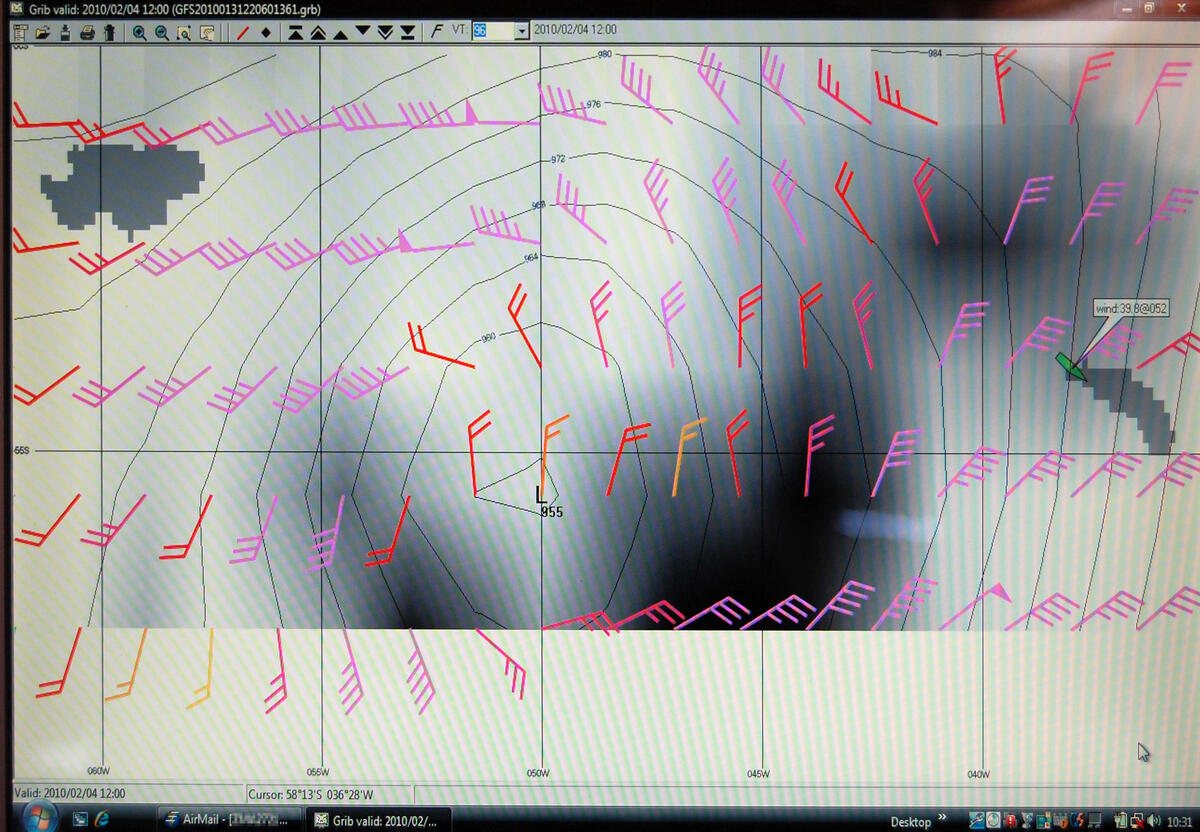
We got underway in clear fine weather, with some 800 NM of uphill sailing ahead of us.
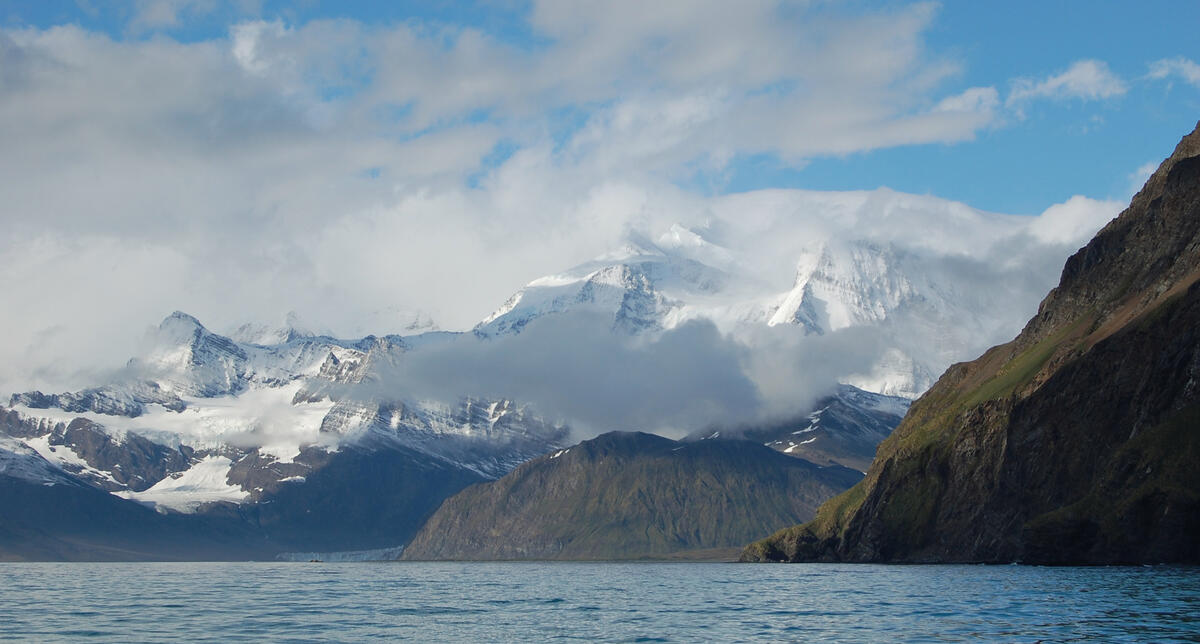
This was to be the portent of the days after departure: ice, big and small, littering the sea.
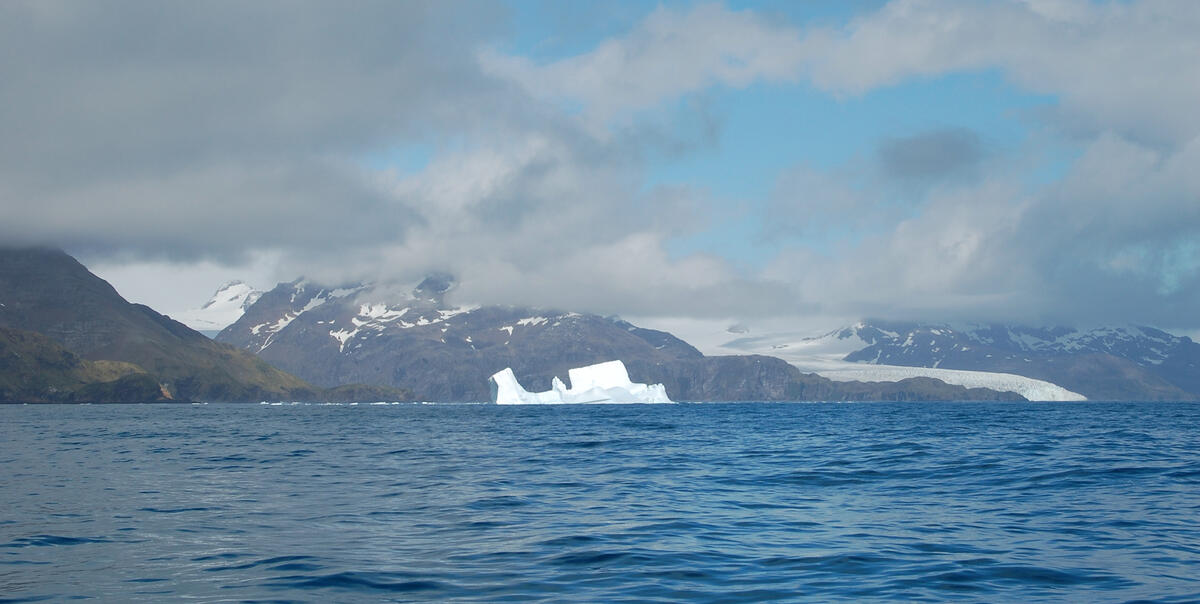
South Georgia becomes surrounded by huge icebergs during the winter, massive chunks of Antarctic sea ice that were responsible in the old days for several false reports of land discovery. At this time of year there are still the smaller ones – they fill the horizon, and the dangerous little growlers that can’t be seen on radar are everywhere.

These big bergs are avoided easily enough, but they are responsible for cluttering up the sea to leeward with brash and growlers. It was while Kiwi Roa was at South Georgia that a 18 m (60′) Oyster, only a few hundred miles from this location, hit something presumed to be ice, and sank. The British family including two young girls had to be rescued by the HMS Clyde based in the Falklands, a reminder of the need for metal hulls when it comes to “cruising” at these latitudes.
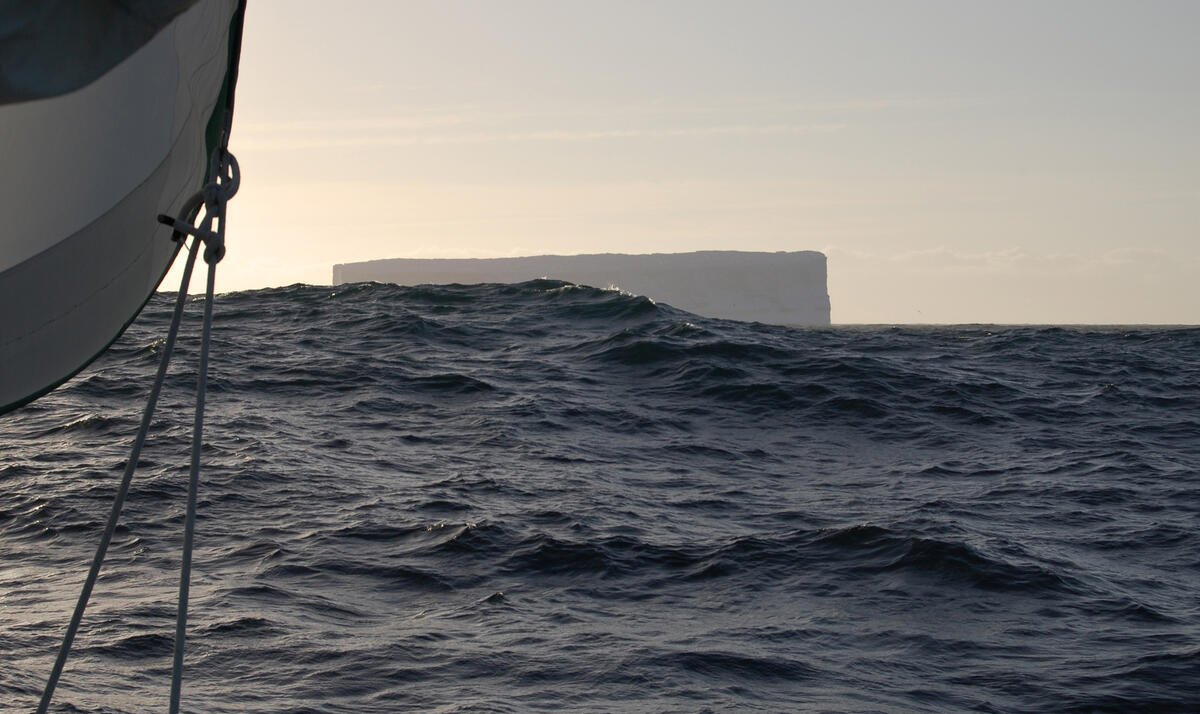
With some storm damage but mostly safe and secure, Kiwi Roa ended her expedition back in Stanley after three months in the wilderness. The dinghy, lashed upside down on the foredeck for passage making, was a casualty of the return trip, crushed by solid water which also managed to bend several stanchions – the first time we’ve seen that sort of damage in over 80,000 NM since launching the boat. At 55° south, approaching the Falklands, a system moving across the islands forced Kiwi Roa to heave to for a night in 45 knots of wind. Landfall the next day was made in huge seas, sleet and no visibility, with the breakers showing in the storm mist before the land behind could be seen; higher land behind completely obscured in freezing fog. Several knots of current setting the boat onto the coast was no help – it’s no surprise that more ships were lost on the Falklands in the old days than any other area in the world.
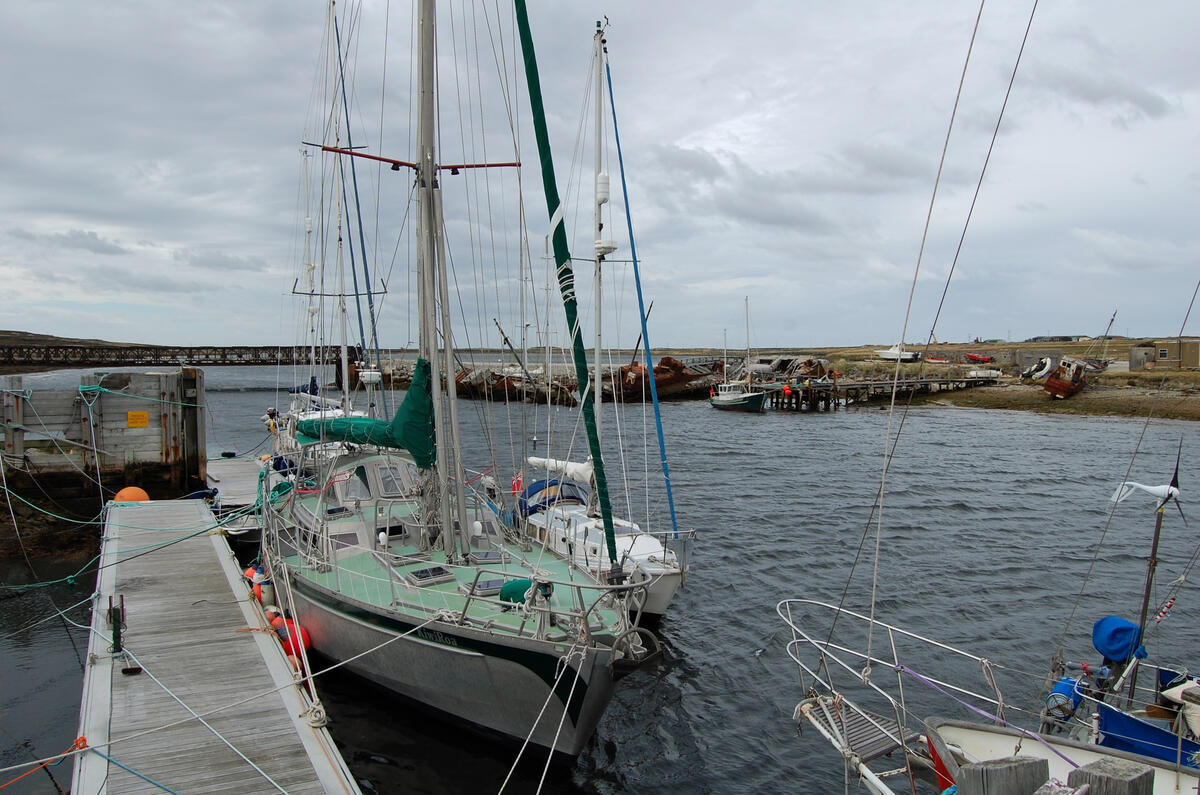
South Georgia generally was a tremendously worthwhile destination, the sort of adventure cruise that Kiwi Roa was intended for, and a worthy complement to her prior trip to the Antarctic Peninsula. Now back above the Antarctic Convergence probably for good, it was time to consider future voyages.
